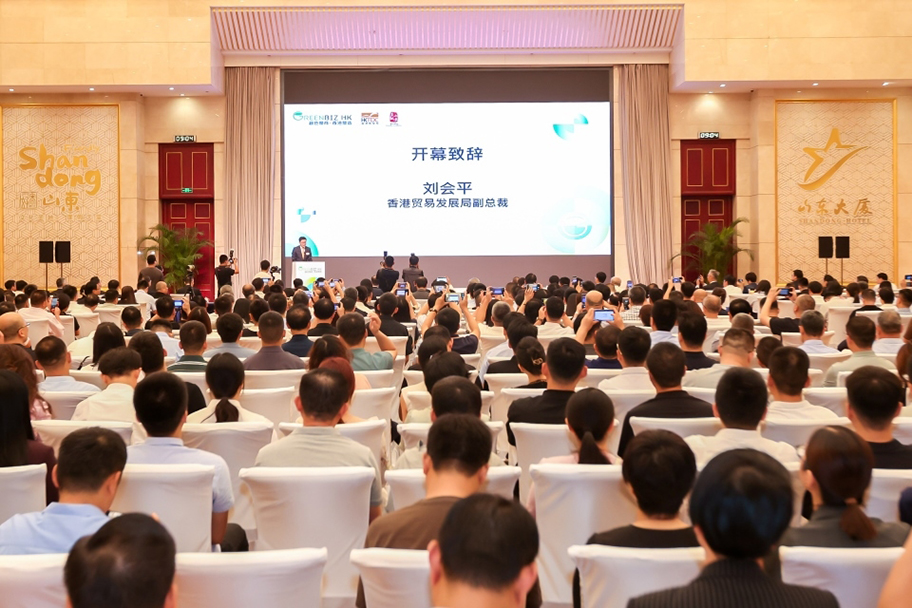Expert insights: Infrastructure investment trends on the Belt and Road
Expert insights: Infrastructure investment trends on the Belt and Road
Belt and Road investment continues to flow to large infrastructure projects, but renewable energy is a growing and in-demand sector. Meanwhile, moves to attract private capital by promoting public-private partnerships (PPPs) have begun in earnest.
The Belt and Road Initiative aims to connect every quadrant of Asia with Europe, the Middle East and Africa over six inter-regional corridors, through construction of communications, power and industrial infrastructure on a massive scale. The projected total investment, scaled in trillions, has generated much expectation around the world.
With the estimates of projected spending varying from US$1 trillion to as much as US$8 trillion, the Belt and Road Initiative is easily the world’s leading programme of planned infrastructure construction today and in the foreseeable future. And all that building—roads, railways, ports, power plants and more—will certainly have a long-term, beneficial impact on local and regional economies beyond the cash flowing to contractors and the wages paid to workers.
Through 2018, more than 80% of Belt and Road project funding (some sources estimate up to 90%) has come from governments and multilateral banks, possibly due to the long investment horizons of infrastructure projects and the financial, environmental, political and legal risks entailed, particularly when it comes to projects in less-developed countries.
Since 2017, the National Development and Reform Commission (NDRC) has been actively promoting PPP as a model for Belt and Road investment. All sides now recognise that, having kick-started the process, the involvement of private capital is key to sustaining Belt and Road development. Bernard Charnwut Chan, President, Asia Financial Holdings Ltd, summed up the rationale at the Belt and Road Summit in Hong Kong this June: “Government cooperation can prepare the foundations, but it’s up to the business community to build on them and bring projects to fruition.”
A more prominent role for PPPs could significantly alter the Belt and Road investment landscape. There are encouraging signs that the message is already beginning to reach its intended audience: an intensive training workshop in PPP and the Belt and Road was held in Hong Kong and Geneva, Switzerland in 2017, jointly organised by UNECE’s International PPP Centre of Excellence and two of the top universities in Beijing and Hong Kong.
Building private sector investor confidence will require more concrete changes in the Belt and Road ecosystem, however. Not the least of these will be moving towards higher standards of governance (a topic addressed positively in comments by Chinese Foreign Minister Wang Yi, speaking last March in Paris), greater risk awareness and professional risk management, and a neutral venue for dispute resolution, with Hong Kong the leading candidate to take that role. One of the disincentives to private investment in the Belt and Road Initiative, however, has been a relative lack of bankable projects, as Eddie Yue, Deputy Chief Executive of the Hong Kong Monetary Authority, underscored in his opening remarks as chair of the Risk Mitigation in Infrastructure Financing panel at the Belt and Road Summit.
More optimistically, Fang Qiuchen, Chairman of China International Contractors Association (CHINCA) observed that “investors are now the driving force [in the Belt and Road Initiative]. We need to be clear about the challenges and aware of the risks, not least political, but this is the time to grasp opportunities.”
In fact, many of the top Chinese infrastructure and construction companies are already listed in Hong Kong; and a Hong Kong government pilot bond grant scheme to offset bond issuer expenses will generate additional Belt and Road investment opportunities.
Another increasingly popular sector is clean and renewable energy, as Wang Jianping, Chairman of China Energy Engineering Group pointed out: “There’s a huge gap between supply and demand for electricity along the Belt and Road, so we see a bright future for power generation.” This demand, Wang explained, extends to renewable energy and new-energy projects such as hydro, wind, solar and biomass. These clean energy projects are well supported, developed in partnership with the Silk Road Fund and China Environmental Energy Investment, a private Hong Kong-based holding company.
Green finance is yet another trending area which offers some intriguing opportunities. The Hong Kong Special Administrative Region (HKSAR) Government is set to launch an extensive green bond programme aimed at promoting and supporting Belt and Road development, and to attract international investors to fund green projects through Hong Kong’s capital markets. “The development of green financing is as important as developing green products and services, bringing more diversity, liquidity and business to our capital market,” said Joseph Chan, Under Secretary for Financial Services and the Treasury of the HKSAR Government.
As Belt and Road infrastructure projects reach completion, the investment picture will begin a shift to second-wave construction projects and related services. One of the early second-wave Belt and Road projects was described by Broad Homes Industrial Group Chairman Zhang Jian: “As economies develop along the Belt and Road, strong demand also grows for housing—in particular affordable and often urgent housing. . . . Housing will become in great demand, and it brings immediate benefit to communities.”
Besides industry, cultural and structural trends, the geography of Belt and Road investment trends warrants attention. While South and Central Asia have seen a net downturn in Chinese outward foreign direct investment over the past three years, the Middle East and Russia have enjoyed a modest uptick. In the Middle East, Saudi Arabia offers a twist to the Belt and Road tale: facing a housing shortage, the kingdom is interested in partnering with Chinese developers, such as the Government of the Ningxia Hui Autonomous Region which signed a memorandum of understanding with the Saudi Ministry of Housing to develop the Al-Asfar outskirts in Al-Ahsa Province and build 100,000 housing units.
Finally, with their geographical and cultural proximity to China, the ASEAN countries have enjoyed the largest and steadily increasing concentration of Chinese investment—a trend that is likely to continue for some years to come.
Avron Boretz, Kaya Consulting International
Click here for more event highlights and speaker insights from the Belt and Road Summit held in Hong Kong on 28 June 2018.




